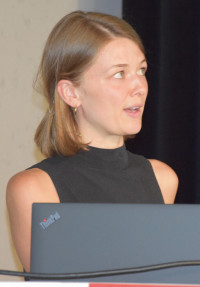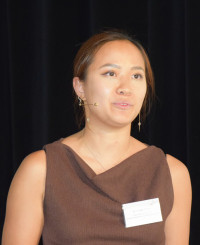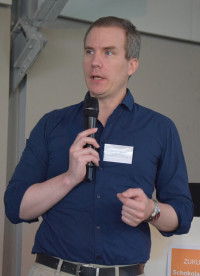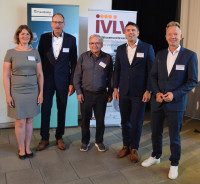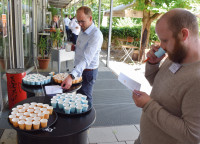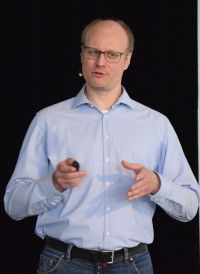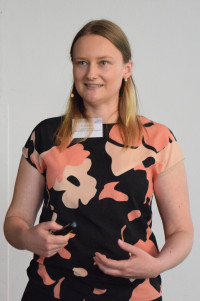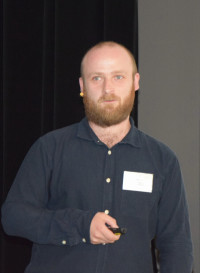Is it all chocolate? Over two days in Freising at the end of June, in very summery temperatures, the focus was once again on topics such as conching, research planning, shelf life, hazelnuts and milk and milk powder substitutes in various sessions. There were intensive insights into current technological developments. With around 90 participants, the 60th edition of this event in the Lindenkeller was once again very well attended and provided an opportunity for professional dialogue.
By Dr Jörg Häseler
Oliver Stricker (August Storck KG, Chairman of the IVLV Chocolate Technology Working Group) and Dr Marc Lutz (Migros Industrie AG, Deputy Chairman of the Working Group) welcomed the participants.
Dr Gottfried Ziegleder, Fraunhofer IVV, set out on the trail of ‘natural sweetness’ for chocolates from a technological perspective. The trend towards using fructose for diabetic chocolate in particular is now being realised through the use of dates. When it comes to raw materials, it is important to find the ideal fruit, whereby the fructose content can vary greatly depending on the fruit. The sorbitol content should also be taken into account. With regard to the recipe, there are further possibilities for action through the water content, which should be as low as possible, and through the fibre ingredient.
You should also keep an eye on the process parameters. These include a maximum conching temperature, fine grinding in a ball mill instead of a roller mill, keeping the humidity as low as possible and adjusting the temperature in the liquid tank.
Prof. Dr Dominikus Gregor Kittemann (Weihenstephan-Triesdorf University of Applied Sciences, Faculty of Horticulture and Food Technology) shed light on the topic of hazelnuts, especially their cultivation in Bavaria. He focussed in particular on the opportunities and challenges of cultivation, with the main problems being the strongly fluctuating harvest quantities and overall low volumes. The influence of weather conditions such as late frosts also plays a role. There is great concern about the lack of plant protection options against the hazelnut borer and bugs. The fact that there is hardly any research and advice on cultivation also has a negative impact. The potential is there and the support of domestic hazelnut cultivation through research and advice should be promoted, but funding is an outstanding aspect.
Dr Christa Schuster-Salas, Infopoint Kakao und mehr, added to his comments. She gave the participants the opportunity to taste hazelnuts that had been stored under the influence of light or in the dark. The smell of cardboard was seen by many as a negative factor.
The second day began with Dr Isabell Rothkopf's presentation on research planning at the Fraunhofer IVV. This was followed by a presentation by Dr Lukas Oehm, Fraunhofer IVV Dresden. He reported on digital assistance systems for optical quality monitoring. The associated image data is analysed using deep learning and allows a distinction to be made between ‘OK’ and ‘not OK’ products; it is also possible to assign the defects to different classes after they have been detected. Depending on the area of application, various camera systems are used, ranging from simple industrial cameras to specialised cameras, such as the LumiHD developed by the Fraunhofer IVV.
The second part of his presentation focused on efficient mould development through cross-company data exchange. The technology is based on the fact that the collected data remains in the storage system (server, cloud, etc.) of the respective partner. The participating partners receive certified access to previously defined data points and not automatic full access. The main benefit lies in the reduction of development time and development costs for new bisphenol A-free moulds; the same tests can also be avoided. Corresponding protocols allow the automatic conversion of measured variables for different units and measurement methods.
Bisphenol A continues to be a highly controversial topic. The corresponding regulation has been passed and Dr Frank Heckel (Food Chemistry Institute of the BDSI) is leaving no stone unturned to ultimately obtain an exemption. A BDSI/LCI project for BPA-free moulds has been launched. 18 industrial production lines are currently being tested. As part of the antitrust-compliant procedure, there are regular status updates in the project team on the standardised evaluation of the test results, which are recorded using forms. The anonymised reporting at the LCI is to take place in the first quarter of 2026 and the information will then be communicated to all stakeholders.
Dr Isabell Rothkopf presented solutions for vegan innovations in chocolate technology and presented developments in functional alternatives for whole milk powder. The research objective was to develop functional vegan alternatives to whole milk powder for chocolate, focussing on particle morphology and its impact on chocolate properties.
Their main findings are:
• Successful formulation of vegan whole milk powder alternatives using freeze-drying and spray-drying methods is achievable.
• The characterisation revealed significant differences in particle morphology, which have an impact on the processing and flow properties of the resulting chocolates. However, the protein source pea proved not to be sensory flawless.
• The rheological properties of chocolates with vegan alternatives met the standards typical for milk chocolates.
Finally, there was the announcement of a new appointment: Dr Ulrich Adolphi is taking over the deputy position in the IVLV Chocolate Technology Working Group from Dr Marc Lutz. And in keeping with good tradition, we conclude with a reference to next year's conference: 23/24 June.


